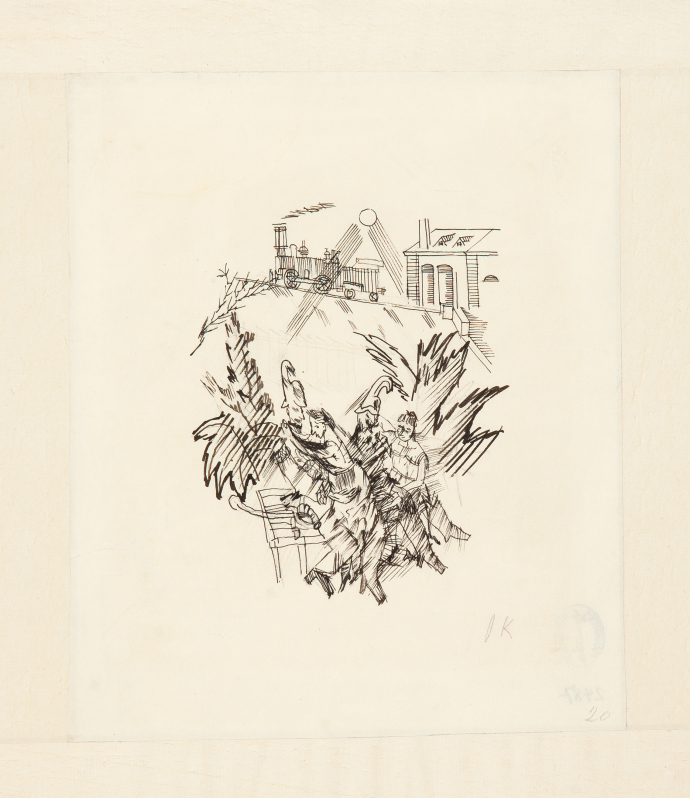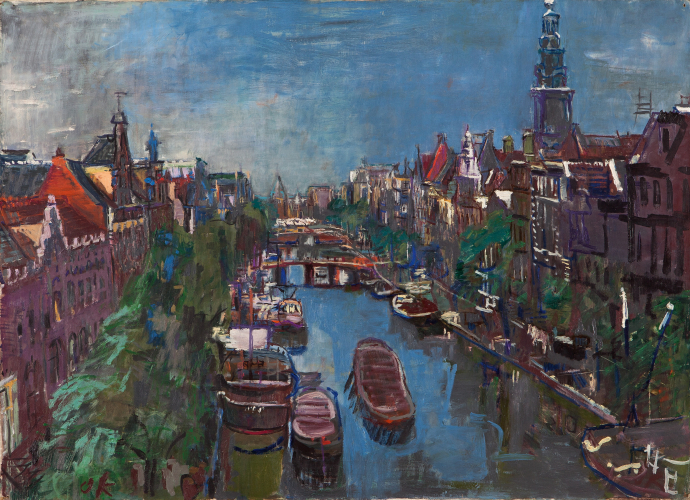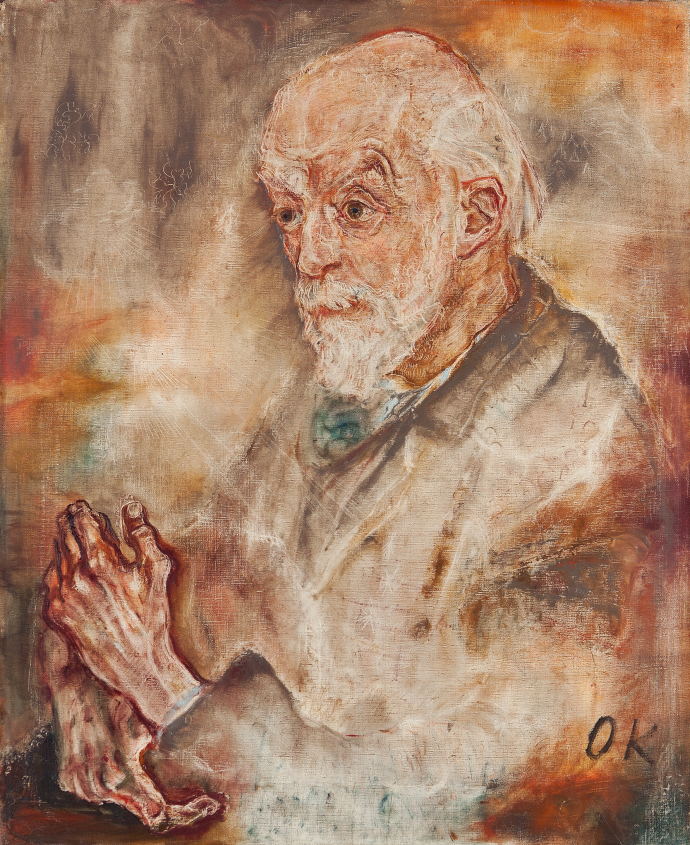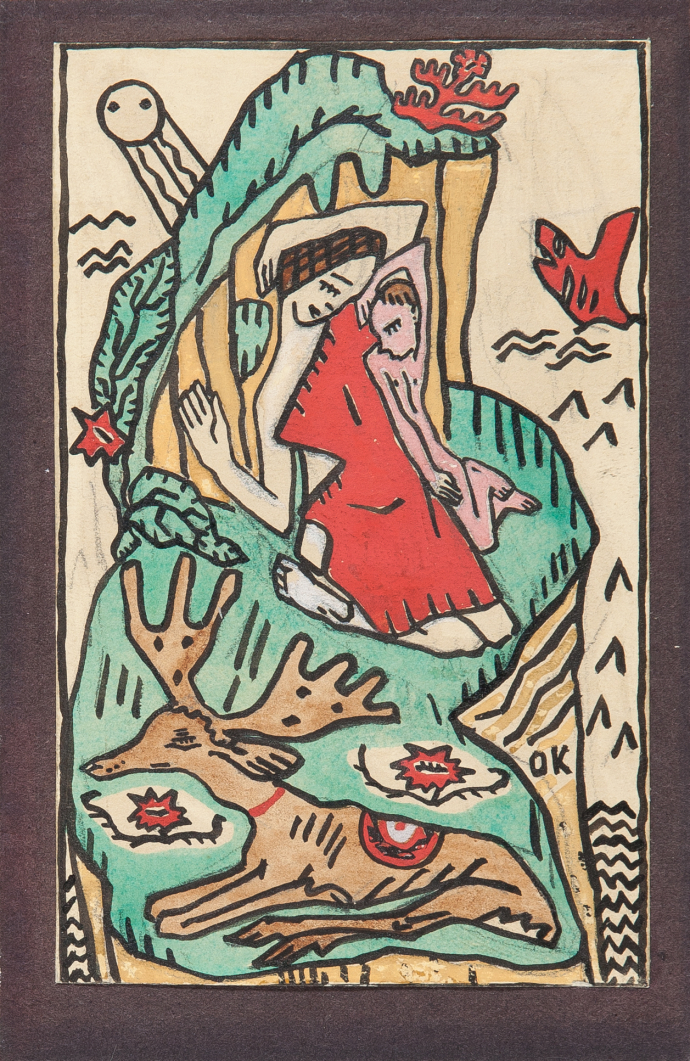nicht ausgestellt
Intro
In 1912 the young Oskar Kokoschka spent the summer in Semmering, a spa town in Lower Austria, together with his friends Peter Altenberg (1859–1919) and the architect Adolf Loos (1870–1933). Altenberg, a member of Vienna’s “coffeehouse literati” and an important writer of the Wiener Moderne, met Sonia Dungyersky in the town and convinced the parents to allow the six-year-old to sit for a portrait. Kokoschka produced an initial, unfinished sketch, which has been lost.
In the second portrait, he shows the young girl seated with a ball and dog, alluding to his model’s tender age. Kokoschka’s manner of painting is expressive and extremely vigorous. He depicts the girl’s body with broad brushstrokes and completely dissolves individual components of the picture—such as the dog’s body—in bold strokes. As a result, his portrait assumes a planar character, while the spatial situation is so vague that the young girl, who is clearly sitting, appears to be positioned in front of the canvas. Despite all the abstraction, Kokoschka succeeds in capturing the childlike features of his model, whose gaze is both reserved and full of expectation.
Kunsthalle Mannheim
Transkription
A young girl is sitting there, framed by a dog and a ball. Oskar Kokoschka‘s manner of painting is expressive and extremely vigorous. He depicts the girl’s body with broad brushstrokes, and completely dissolves individual components of the picture — such as the dog’s body — into bold strokes. As a result, his portrait assumes a planar character, while the spatial situation is so vague that the young girl, though clearly sitting, appears to be standing in front of the canvas. Kokoschka succeeds in capturing the childlike features of his model, whose gaze is both reserved and full of expectation.
This painting was created in 1912. At the time, young Kokoschka was about to become one of Austria’s most important painters. Kokoschka remained in close contact with the cultural avantgarde of his time. He spent the summer of 1912 with friends – writer Peter Altenberg and architect Adolf Loos – in the Austrian spa town of Semmering. During their stay there, they met 6-year-old Sonia Dungyersky and her parents.
Kokoschka produced a portrait of the girl in his eponymous work. And Altenberg, an important writer of the Wiener Moderne, processed the portrait-sitting situation in a literary manner. In his novella published the year after, the painting is given a different character, though. He describes the girl as a Tatar Queen, sitting on a „low, wrought-iron, heavy throne (…) surrounded by bleached Tatar skulls“.
Child-like girl and Tatar Queen – these images may be very different, but both testify to the inspiring effect this meeting with Sonia Dungyersky had on both artists.
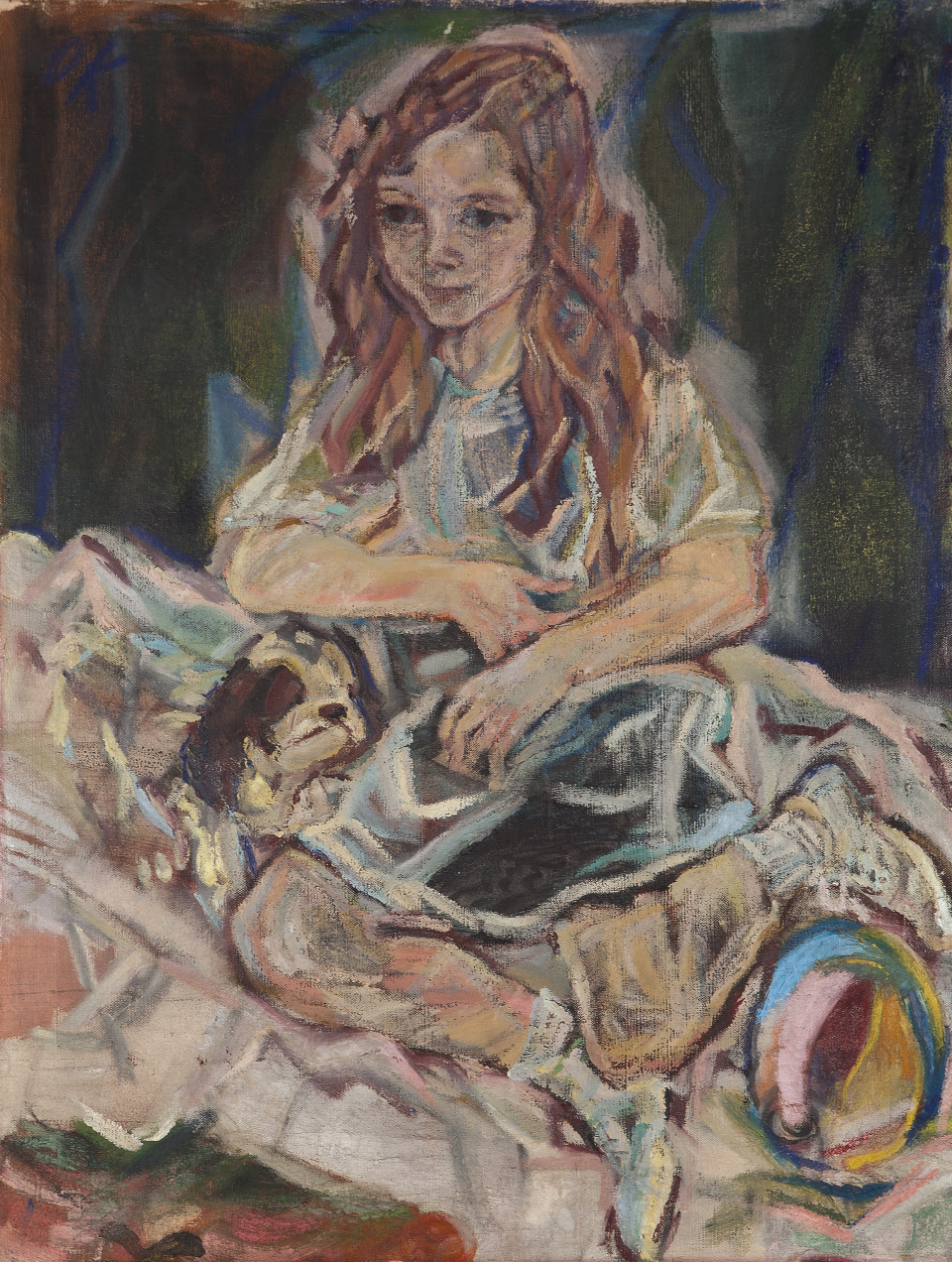
![Hockende Frau Signatur: monogr. mi.re.: "OK": Beschriftung verso: in Bleistift u.: "neues [unleserlich] 371/2 - 54 cm. [unleserlich]"](/sites/default/files/styles/700_breit/public/digitalisate/G2486_MOS_2018.jpg?itok=gp3nEIZc)
